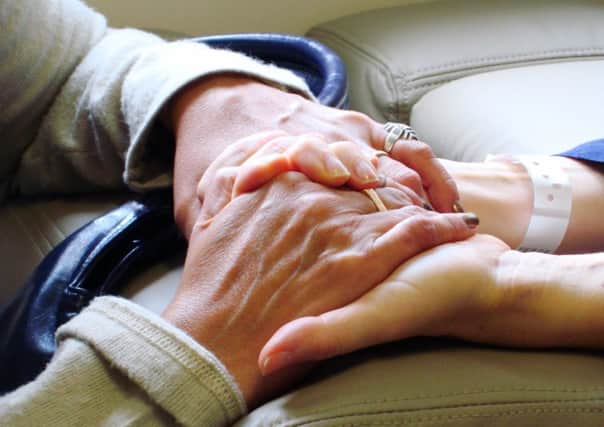Leaders: Dementia care | Motor rally tragedy


While treatment in the large majority of cases is caring and considerate, the report by the Mental Welfare Commission has raised several worrying concerns. Chief among these is the growing incidence of hospitalised dementia patients being given drugs to help manage their behaviour. Specifically, its report finds that 84 per cent of patients were on at least one psychotropic drug, with 34 per cent on three or more.
The reviewers also raised the possibility that, in some cases, treatment may be given without proper authorisation.
Advertisement
Hide AdAdvertisement
Hide AdPsychotropic drugs are used to address the symptoms of mental disorders including schizophrenia, depression, bipolar disorder (manic-depressive illness), anxiety disorders and attention deficit-hyperactivity disorder. The range of such drugs has widened considerably in recent years as improved medication has become available. They work to change the lives of people with mental disorders for the better and, without them, many might suffer serious and disabling symptoms.
But there can be side-effects and the provision of such drugs requires close monitoring and supervision. High resort to medicines to tackle anxiety was found, with 52 per cent of patients being prescribed these. In addition, 45 per cent of patients were taking anti-psychotic medication. While this may help relieve symptoms such as hallucinations, delusions, agitation or aggression, there are known risks for people with dementia. It is also suggested that, in some cases, antidepressants were used as an alternative to other drugs to act as a sedative.
One particularly worrying finding of the report is the possibility that, in some cases, treatment may be given to patients without proper authorisation. Much of the treatment of dementia patients is undertaken under the Adults With Incapacity (Scotland) Act 2000. This sets out how decisions can be made on behalf of an individual when they no longer have capacity to make decisions on their own behalf. The reviewers found that for some 24 per cent of people treated under the Act, their treatment “may not have been properly authorised”.
The report found units where the care and/or the environment were poor, and the rights and dignity of people with dementia were not adequately respected.
Another concern highlighted was that 53 per cent had not been outside in the previous month even though it was summer, while 73 per cent had not been on an outing from the unit in the previous three months.
Despite the large majority of cases where care was exemplary, this is a serious list of concerns. That the incidence of dementia is rising with Scotland’s ageing population only underlines the need for this report to be considered at the highest level and action taken to ensure that these lapses are corrected and supervision of medication improved.
Lessons from motor rally tragedy
How tragically ironic that a motor rally in the Scottish Borders held in honour of Scottish former Formula 1 champion Jim Clark, who died in a 1968 motor racing accident, should end with the deaths of three people and two seriously injured.
This has been a popular Borders event for years, attended by car enthusiasts and lay members of the public alike. But the shockwaves from these fatalities extend far wider than the immediate area.
Advertisement
Hide AdAdvertisement
Hide AdA list of points for action and recommendations must of necessity await the outcome of comprehensive police reports into the causes of the accidents and how bystanders lost their lives. But two lessons may immediately be drawn.
The first is to question why the events were not stopped immediately after the first incident, given the danger posed by conditions over the entire area.
The second is the need for a comprehensive review of the proximity of spectators to the cars’ route, particularly when conditions were slippery and treacherous. Cars can suddenly lose control and, in the second incident, the vehicle was believed to have gone sideways one way and then spun to the other side of the road, where it ploughed into four people.
Some spectators always wish to be closer to the action than ground conditions would warrant, and they may consider themselves “safe” – but when a car is out of control, few areas bordering the track can be considered safe.
A more vigilant system of spectator positioning needs to be in place, and areas of vulnerability well cordoned off for both driver and crowd safety.